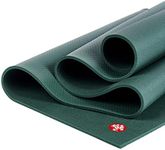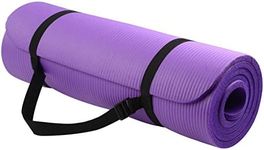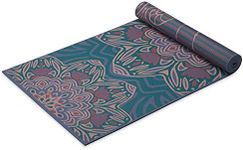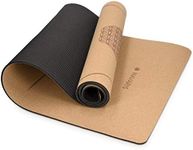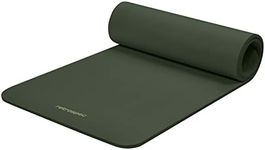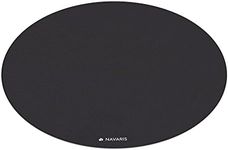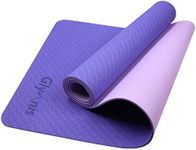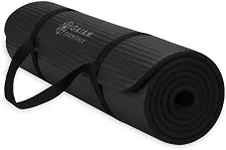Buying Guide for the Best Yoga Mats
Choosing the right yoga mat can make a big difference in your practice, whether you’re a beginner or more experienced. The best mat for you depends on your style of yoga, where you practice, and your personal preferences for comfort and grip. By understanding the key features of yoga mats, you can find one that supports your body, helps you maintain balance, and makes your sessions more enjoyable.ThicknessThickness refers to how much cushioning the mat provides. Thinner mats (around 1/16 inch or 1.5 mm) are lightweight and give you a strong connection to the floor, which is great for balance poses and travel. Standard mats (about 1/8 inch or 3 mm) offer a balance between comfort and stability, making them suitable for most people. Thicker mats (1/4 inch or 6 mm and above) provide extra cushioning, which is helpful if you have sensitive joints or practice on hard surfaces. To pick the right thickness, think about your comfort needs and the type of yoga you do—gentle or restorative styles may benefit from more padding, while active or balance-focused practices might be better with a thinner mat.
MaterialYoga mats are made from various materials, such as PVC, TPE, natural rubber, or cork. PVC mats are durable and provide good grip, but they are less eco-friendly. TPE mats are more environmentally friendly and lightweight, but may wear out faster. Natural rubber and cork mats are sustainable and offer excellent grip, but can be heavier and may have a natural scent. When choosing material, consider your priorities: if you want an eco-friendly option, look for natural materials; if you need durability and easy cleaning, PVC or TPE might be better.
Texture and GripTexture affects how much traction you get, which helps prevent slipping during poses. Some mats have a smooth surface, while others have a raised or patterned texture for extra grip. If you tend to sweat a lot or practice hot yoga, a mat with more texture or a sticky surface can help you stay stable. If you prefer a softer feel, a smoother mat might be more comfortable. Think about your practice style and how much grip you need to stay safe and comfortable.
SizeMost yoga mats are about 68 inches long and 24 inches wide, which fits most people. If you are taller or want more space to move, look for longer or wider mats. A larger mat gives you more room for stretching and movement, but may be bulkier to carry. Consider your height and how much space you like during practice when choosing the size.
Weight and PortabilityThe weight of a yoga mat affects how easy it is to carry, especially if you travel or go to classes outside your home. Lightweight mats are easier to transport but may offer less cushioning. Heavier mats provide more stability and comfort but can be harder to move around. If you plan to carry your mat often, look for a lighter option; if it will mostly stay in one place, weight may be less important.
Ease of CleaningSome mats are easier to clean than others, which is important for hygiene, especially if you sweat a lot. PVC and TPE mats usually wipe clean easily, while natural materials may require more gentle care. If you want a low-maintenance mat, check if it can be wiped down or washed regularly. Consider how much effort you want to put into cleaning when making your choice.


